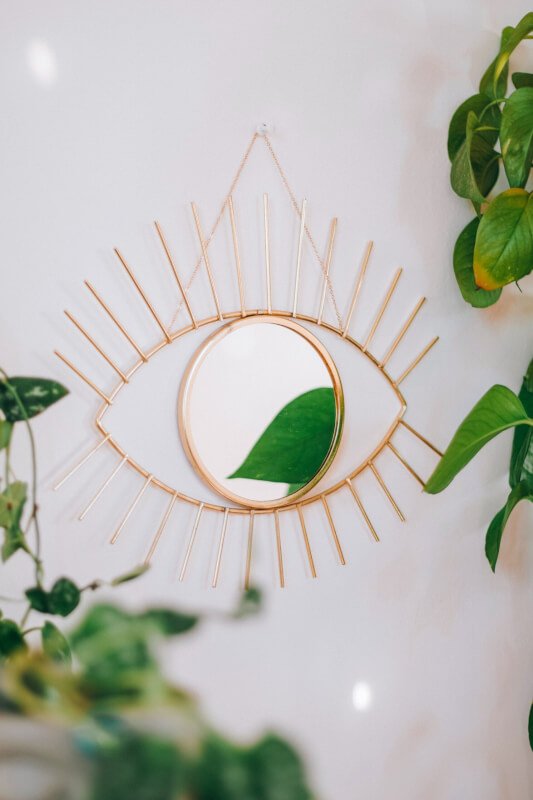Imagine having a stylish and practical solution for housing your beloved reptiles – introducing the Reptile Enclosure With Stand. This innovative enclosure offers the perfect habitat for your scaly friends, combining functionality with aesthetic appeal. With its sleek design and sturdy stand, it seamlessly blends into any room, providing a comfortable and secure environment for your reptiles to thrive. Whether you’re a seasoned reptile enthusiast or a beginner looking to embark on an exciting new journey, the Reptile Enclosure With Stand is a must-have addition to your collection.
Choosing the Right Reptile Enclosure
When it comes to caring for your reptile, providing a suitable enclosure is of utmost importance. The right reptile enclosure offers a safe and comfortable living space for your scaly friend, allowing them to thrive in a controlled environment. However, with so many options available in the market, choosing the right reptile enclosure can be quite overwhelming. In this article, we will guide you through the process of selecting the perfect reptile enclosure for your pet.
Determining the Size and Type
The first step in choosing a reptile enclosure is determining the size and type that would best suit your reptile’s needs. Reptiles come in various sizes, and their enclosures should be spacious enough for them to move around comfortably. Consider the adult size of your reptile and choose an enclosure that allows for growth.
Additionally, the type of reptile you have will influence the type of enclosure you should select. Some reptiles, like snakes, may require more space horizontally, while others, like arboreal lizards, may need a taller enclosure with plenty of vertical space for climbing. Consider the natural habitat of your reptile and try to replicate it as closely as possible in their enclosure.
Considering the Material
Another crucial factor to consider when choosing a reptile enclosure is the material used. The two most common materials for reptile enclosures are glass and plastic. Glass enclosures, such as terrariums, provide excellent visibility and are perfect for reptiles that require a higher humidity environment. On the other hand, plastic enclosures, like cages or tubs, are lighter and easier to clean. They are also highly durable and less prone to breakage.
Wooden vivariums are a popular choice for reptile owners as they offer natural insulation and aesthetic appeal. They provide excellent heat retention and are suitable for reptiles that require a warm and humid environment. PVC reptile cages are also gaining popularity due to their lightweight construction and ease of maintenance. Consider the specific needs of your reptile and choose a material that best suits their requirements.
Assessing Ventilation and Lighting Needs
Proper ventilation and lighting are vital for the overall health and well-being of your reptile. Ventilation ensures fresh airflow, preventing the buildup of harmful bacteria and maintaining optimal humidity levels. Look for an enclosure with adequate ventilation, such as removable screens or vents, to ensure proper air circulation.
Lighting is equally important as it allows your reptile to receive essential UVB rays necessary for their well-being. Some reptile enclosures come with built-in UVB lighting fixtures, which can be convenient and ensure proper exposure. However, if your enclosure does not have this feature, you will need to consider additional lighting options such as UVB bulbs or fluorescent lights.
Having assessed the size and type of enclosure, the material used, and the ventilation and lighting needs, you are now ready to explore the various features to look for in a reptile enclosure.
Features to Look for in a Reptile Enclosure
Secure Locking Mechanism
A secure locking mechanism is essential to prevent your reptile from escaping and ensures their safety. Look for enclosures that feature sturdy locks or latches that can withstand the strength of your reptile. It is also important to regularly check and maintain the locking mechanism to ensure its functionality.
Removable Screen or Lid
Having a removable screen or lid allows for easy access to your reptile and simplifies the cleaning process. Look for enclosures that have a tightly fitting, yet removable, screen or lid that allows you to reach inside the enclosure without disturbing your reptile too much.
Easy Access Doors
Easy access doors are particularly important when it comes to cleaning and feeding your reptile. Look for enclosures that offer doors with secure locks that are large enough to allow for easy access and manipulation of the enclosure’s interior. This will make it easier for you to clean the enclosure and provide food and water to your reptile.
Built-in Heat and UVB Lighting
Having built-in heat and UVB lighting fixtures in your reptile enclosure can simplify the setup process and ensure proper temperature and lighting conditions for your reptile. Look for enclosures that come with these fixtures or that have designated areas to install them. This will help create a suitable environment for your reptile’s health and well-being.
Flooring Options: Substrate or Liner
The flooring of your reptile enclosure is also an important consideration. Different reptiles have different substrate requirements based on their natural habitat. Some reptiles prefer a loose substrate that mimics their natural environment, while others may require a solid liner for easier cleaning. Research the specific needs of your reptile and choose an enclosure that accommodates their flooring requirements.
Humidity Regulation
Maintaining the proper humidity levels is crucial for reptiles that require a humid environment. Look for enclosures that provide features to regulate humidity, such as removable water trays or misting systems. These features will help you maintain the ideal humidity levels for your reptile’s health and comfort.
With the features covered, let’s take a closer look at the different types of reptile enclosures available in the market.
Types of Reptile Enclosures

Glass Terrariums
Glass terrariums are a popular choice for reptile owners due to their aesthetic appeal and excellent visibility. They offer a clear view of your reptile and allow for easy monitoring. Glass terrariums are usually equipped with a removable screen or lid for ventilation and have the option to install heat and UVB lighting fixtures. They are suitable for reptiles that require a higher humidity environment.
Plastic Cages or Tubs
Plastic cages or tubs are lightweight and easy to clean, making them a convenient option for reptile owners. They are highly durable and less prone to breakage compared to glass enclosures. Plastic enclosures are available in various sizes and are suitable for reptiles that require a dry or semi-humid environment. They may require additional measures to ensure proper ventilation and heating.
Wooden Vivariums
Wooden vivariums are popular among reptile owners due to their natural insulation and aesthetic appeal. They provide excellent heat retention and are suitable for reptiles that require a warm and humid environment. Wooden vivariums are available in various sizes and can be customized with different features like vents, glass panels, and lockable doors. They require regular maintenance to prevent mold or rot.
PVC Reptile Cages
PVC reptile cages are gaining popularity due to their lightweight construction and ease of maintenance. They are made from a durable plastic material that is resistant to moisture, making them suitable for reptiles that require a humid environment. PVC cages often come with built-in features like ventilation, hinged doors, and lockable latches. They are available in different sizes and provide excellent visibility.
Now that you have an understanding of the different types of reptile enclosures, let’s move on to selecting the ideal stand for your enclosure.
Selecting the Ideal Stand
Benefits of Using an Enclosure Stand
Using an enclosure stand offers numerous benefits when it comes to housing your reptile. First and foremost, it raises the enclosure to a comfortable height, allowing you easy access for maintenance, cleaning, and interacting with your reptile. Additionally, an enclosure stand provides stability and prevents the enclosure from being knocked over or damaged accidentally. It also creates a designated area for your reptile’s habitat, making it a focal point in your space.
Choosing a Stand Based on Enclosure Size
When selecting a stand for your reptile enclosure, it is essential to consider the size and weight of the enclosure. A stand should be able to support the weight of the enclosure without any risk of collapsing or tipping over. Make sure to check the weight capacity of the stand and ensure it is suitable for your reptile’s habitat. Additionally, consider the dimensions of the enclosure and choose a stand that provides a stable and secure base.
Considering the Material
The material used in the construction of the stand plays a significant role in its durability and stability. Stands are commonly made from wood, metal, or plastic. Wooden stands are popular due to their aesthetic appeal and ability to blend in with home decor. Metal stands, such as steel or wrought iron, offer excellent strength and stability. Plastic stands are lightweight and easy to clean, making them a practical option. Consider your personal preference, the overall aesthetics of your space, and the durability required for your reptile’s enclosure.
Stability and Weight Capacity
Stability and weight capacity are vital considerations when choosing a stand for your reptile enclosure. The stand should be stable enough to support the weight of the enclosure, preventing any accidents or damage. It should have a solid construction, with evenly distributed legs or support points. Additionally, make sure the weight capacity of the stand exceeds the actual weight of your reptile enclosure.
Additional Storage Option
Some stands come with additional storage options, such as shelves or cabinets, which can be incredibly convenient for housing supplies and equipment related to your reptile’s enclosure. If you have limited space or prefer to keep everything organized, consider investing in a stand with built-in storage options. This will allow you to keep everything you need within arm’s reach, making the maintenance process more efficient.
Now that you have your reptile enclosure and stand, it’s time to determine the proper placement of the enclosure within your living space.
Proper Placement of the Reptile Enclosure

Avoiding Direct Sunlight or Drafts
When deciding the placement of your reptile enclosure, it is important to avoid direct sunlight or drafts. Reptiles are sensitive to temperature fluctuations and direct sunlight exposure can lead to overheating or excessively high temperatures within the enclosure. Similarly, drafts can cause a drop in temperature, which may be detrimental to your reptile’s health. Choose a location away from windows, heaters, or air conditioning vents to ensure a stable environment for your scaly friend.
Maintaining Temperature and Humidity Levels
Reptiles have specific temperature and humidity requirements, and it is crucial to maintain these levels within their enclosure. To ensure proper temperature regulation, place the enclosure in an area where the ambient temperature remains relatively stable. Avoid areas that may experience extreme temperature variations. Similarly, consider the humidity requirements of your reptile and choose a location that allows for easy maintenance and control of humidity levels.
Considerations for Noise and Disturbance
Reptiles, especially those prone to stress, can be sensitive to excessive noise or disturbance. Choose a location for the enclosure that is relatively quiet and away from areas with frequent loud noises or foot traffic. This will ensure a calm and stress-free environment for your reptile.
Safety and Accessibility
Ensuring the safety and accessibility of the enclosure is paramount. Make sure the placement allows you to easily access and maintain the enclosure without any obstacles. If you have other pets or children, ensure that the enclosure is placed in an area where it can be monitored to avoid any accidental disturbances or interactions.
Now that your reptile enclosure is properly placed, it’s time to consider the essential accessories that will enhance your reptile’s living environment.
Essential Accessories for a Reptile Enclosure
Heat Sources: Basking Lamps and Heat Pads
Reptiles are ectothermic, meaning they rely on external heat sources to regulate their body temperature. Basking lamps and heat pads are common heat sources used in reptile enclosures. Basking lamps provide a localized heat source, allowing your reptile to properly thermoregulate by moving closer or further away from the heat. Heat pads, on the other hand, provide a gentle and constant heat source for reptiles that require belly heat. Consider the specific heat requirements of your reptile and provide the appropriate heat source in their enclosure.
UVB Lighting for Vitamin D Synthesis
UVB lighting is crucial for reptiles as it enables the synthesis of vitamin D, which is essential for calcium absorption and overall health. UVB bulbs or fluorescent lights are commonly used to provide UVB rays in the enclosure. Ensure that the UVB lighting is placed at an appropriate distance from your reptile to ensure they receive the required UVB dosage without the risk of overexposure.
Thermometers and Hygrometers for Monitoring
Regular monitoring of the temperature and humidity levels within your reptile enclosure is vital. Thermometers and hygrometers are essential tools for accurately measuring these parameters. Place thermometers and hygrometers at different locations within the enclosure to ensure an accurate understanding of the ambient conditions. This will help you make necessary adjustments to maintain the optimal environment for your reptile.
Hides and Shelter for Stress Reduction
Reptiles often require hiding spots or shelter to reduce stress and provide a sense of security. Hides can be natural-looking caves, hollow logs, or purpose-built shelters available in the market. Ensure that you provide multiple hiding spots in your reptile’s enclosure, allowing them to choose the one that suits their needs and preferences.
Substrate or Flooring Options
The choice of substrate or flooring in your reptile enclosure is essential for maintaining hygiene and replicating the natural environment. Different reptiles have different substrate preferences, ranging from bark chips and soil to reptile carpet or paper towel. Research the specific needs of your reptile and choose the substrate that best suits their requirements. Remember to regularly spot clean and replace the substrate when necessary to maintain a clean and healthy environment.

Decorative Items: Plants and Branches
Adding natural elements to your reptile enclosure, such as live or artificial plants and branches, can enhance the aesthetic appeal and create a more naturalistic environment for your reptile. Plants provide hiding spots and climbing opportunities, while branches can allow for basking or exploring. Ensure that any decorations you choose are safe and non-toxic for your reptile.
Creating a Proper Environment for Your Reptile
Now that you have the essential accessories and elements in place, it’s time to focus on creating a proper environment for your reptile within their enclosure.
Providing a Suitable Temperature Gradient
Reptiles require a temperature gradient within their enclosure to appropriately regulate their body temperature. This can be achieved by providing a hot basking spot and a cooler area. Place the heat source, such as a basking lamp or heat pad, on one side of the enclosure and monitor the temperatures carefully. The gradient allows your reptile to move freely and choose the temperature that best suits their needs.
Creating High and Low Humidity Zones
Some reptiles require specific humidity levels to thrive. Creating high and low humidity zones within the enclosure provides options for your reptile to regulate their moisture levels. This can be done by placing a water dish or a humidifier on one side of the enclosure to create a high humidity area, while the other side remains drier. Research the specific humidity requirements of your reptile and adjust the enclosure accordingly.
Simulating Day and Night Cycles
Reptiles also require a consistent day and night cycle to regulate their sleep and activity patterns. Mimic the natural lighting patterns by providing a reliable light source for daytime and a period of darkness for nighttime. This can be achieved by using timers to automate the lighting schedule and ensuring a consistent photoperiod for your reptile.
Offering Hiding Spots and Climbing Areas
Hiding spots and climbing areas are important for your reptile’s mental and physical well-being. Provide a variety of hiding spots, such as caves, logs, or even hollowed-out decorations, at different levels in the enclosure. Additionally, include branches, platforms, or rocks to create climbing opportunities for arboreal or semi-arboreal reptiles. These features will allow your reptile to engage in natural behaviors and provide mental stimulation.
Maintenance and Cleaning of the Enclosure
Regular maintenance and cleaning of your reptile’s enclosure are crucial for their health and well-being. Follow these guidelines to ensure a clean and safe environment for your scaly friend.
Regular Spot Cleaning and Waste Removal
Spot cleaning involves removing any visible waste or soiled substrate from the enclosure on a daily basis. Regularly check the enclosure for feces, shed skin, or any leftover food and remove them promptly. Spot cleaning helps to maintain hygiene and prevent the buildup of harmful bacteria.
Periodic Full Cleaning and Disinfection
In addition to spot cleaning, a periodic full cleaning and disinfection is necessary to remove any accumulated waste and bacteria from the enclosure. Remove your reptile from the enclosure and place them in a temporary holding container. Remove all decorations, substrate, and accessories from the enclosure and clean them thoroughly. Wipe down the walls and floor of the enclosure with a reptile-safe disinfectant, ensuring all surfaces are clean. Rinse everything thoroughly and allow them to dry before reassembling the enclosure.
Replacing Substrate or Liner
The substrate or liner in your reptile’s enclosure should be regularly replaced to maintain cleanliness and prevent odors. Research the specific needs of your reptile and choose a suitable replacement schedule. Some substrates may need to be replaced more frequently than others, especially if they tend to absorb odors or become soiled easily.
Cleaning and Maintaining Water Features
If your reptile enclosure includes a water dish or any other water feature, it is important to clean and maintain them regularly. Replace the water in the dish frequently to prevent the growth of bacteria and algae. Clean the dish with a reptile-safe disinfectant to ensure it remains hygienic for your reptile. If you have a more complex water feature, such as a waterfall or pond, follow the manufacturer’s instructions for cleaning and maintenance.
Tips for Ensuring Reptile Safety
Ensuring the safety of your reptile is paramount. Follow these tips to create a safe living environment for your scaly companion.
Ensuring Proper Ventilation and Airflow
Proper ventilation and airflow are essential for your reptile’s health. Ensure that the enclosure has adequate ventilation, such as removable screens or vents, to prevent the buildup of harmful gases or stagnant air. Adequate ventilation helps maintain optimal humidity levels and prevents respiratory issues.
Preventing Escapes: Tight Seals and Gaps
Reptiles are known for their incredible ability to escape from seemingly secure enclosures. Regularly check the enclosure for any gaps, loose screens, or other potential escape routes. Ensure that all seals and closures are tight and secure to prevent your reptile from getting out and potentially harming themselves.
Avoiding Toxic Materials in Enclosure
Certain materials can be toxic to reptiles if ingested or exposed to their skin. Avoid using any decorations or substrates that may contain harmful chemicals or toxic substances. Research the materials thoroughly and ensure they are safe and non-toxic for your reptile.
Securing Any Electrical Components
If you have any electrical components, such as heating elements or lighting fixtures, within the enclosure, it is important to ensure they are securely installed and cords are properly managed. Reptiles can be curious and may interact with electrical components, posing a risk of injury or electrical hazards. Keep cords out of reach and use protective coverings or channels to prevent accidental contact.
Regular Health Check-ups and Veterinary Care
Just like any other pet, reptiles require regular health check-ups and veterinary care. Find a reptile-savvy veterinarian and schedule regular appointments to ensure your reptile is in good health. Regular check-ups can help detect and prevent any potential health issues and ensure the overall well-being of your scaly friend.
Conclusion
Choosing the right reptile enclosure is crucial for providing a safe and comfortable habitat for your reptile. Consider the size, type, material, ventilation, and lighting needs when selecting an enclosure. Look for features such as a secure locking mechanism, removable screen or lid, easy access doors, built-in heat and UVB lighting, and appropriate flooring options. Explore different types of enclosures, including glass terrariums, plastic cages or tubs, wooden vivariums, and PVC reptile cages. Select an enclosure stand based on the benefits it offers, its suitability for the enclosure size, the material used, stability, weight capacity, and whether it provides additional storage options. Proper placement of the enclosure is essential, considering factors such as avoiding direct sunlight or drafts, maintaining temperature and humidity levels, noise and disturbance considerations, and safety and accessibility. Essential accessories such as heat sources, UVB lighting, thermometers and hygrometers, hides and shelters, suitable substrate or flooring, and decorative items should be considered to create a proper environment for your reptile. Regular maintenance and cleaning, ensuring reptile safety, and providing regular health check-ups and veterinary care are also important aspects of reptile care. By following these guidelines, you can ensure that your reptile thrives in a comfortable and conducive environment.


